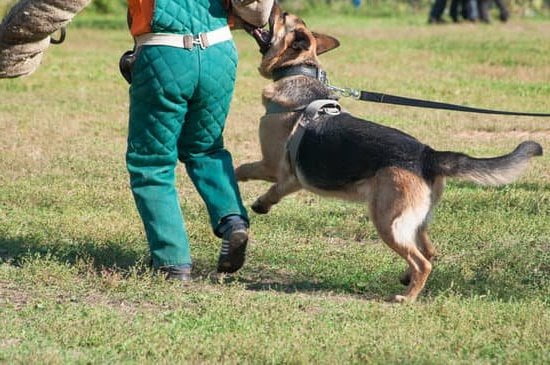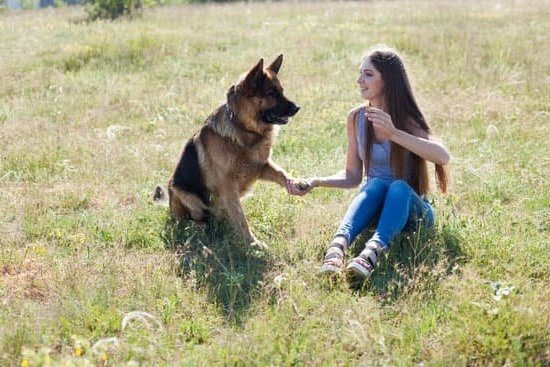Are you wondering how to train a Rottweiler to be a family dog? Raising a Rottweiler as a family pet can be a rewarding experience, but it’s important to understand the breed’s history, temperament, and characteristics to effectively meet their training needs. In this article, we will explore the key factors in training a Rottweiler for family life, including socialization, basic obedience training, positive reinforcement, managing aggression, exercise and mental stimulation, leadership and consistency, and family integration.
Rottweilers are known for their strength, loyalty, and protective nature. Understanding their history as working dogs can provide insight into their behavior and instincts. By learning about the breed’s background and traits, you can tailor your training approach to fit the specific needs of Rottweilers as family pets.
Early socialization is crucial for Rottweilers to ensure they are well-adjusted and comfortable around people, animals, and new environments. Through proper socialization techniques, you can help your Rottweiler become a well-behaved and confident member of your family. Additionally, implementing basic obedience training from an early age can establish a foundation for good behavior and responsiveness to commands.
Socialization
Rottweilers are strong, loyal, and affectionate dogs that can make wonderful family pets when properly trained and socialized. Socialization is a crucial aspect of raising a well-adjusted Rottweiler that is comfortable around people, animals, and new environments.
Early socialization is key to preventing fear-based aggression and anxiety in adult Rottweilers. It involves exposing your Rottweiler puppy to a wide variety of people, animals, sounds, smells, and experiences during their critical developmental period, which is typically between 3 weeks and 3 months of age.
When learning how to train a Rottweiler to be a family dog, it’s important to start the socialization process as early as possible. This can include taking your puppy to different places such as parks, pet stores, and busy streets, as well as introducing them to various people including children and seniors. Exposing your Rottweiler to different environments and stimuli in a positive way will help them grow into a well-rounded adult dog that is confident and adaptable.
Properly socializing a Rottweiler also involves exposing them to other animals. Controlled interactions with other dogs in safe environments can help prevent aggressive behavior towards other animals in the future. It’s essential to supervise these interactions and intervene if necessary to ensure that they are positive experiences for your Rottweiler.
It’s important that owners understand the importance of early socialization for Rottweilers in order to raise a well-adjusted family dog. The effort put into socializing your Rottweiler during their formative months will undoubtedly pay off in the long run by shaping them into friendly, confident companions for the whole family.
| Rottweiler Socialization Tips | Details |
|---|---|
| Start Early | Begin socializing your Rottweiler puppy as early as possible. |
| Exposure | Expose your Rottweiler to various environments, stimuli, people, and animals. |
| Supervision | Always supervise interactions with other animals during the socialization process. |
Basic Obedience Training
Rottweilers are known for their strength, intelligence, and loyalty, making them great candidates for family pets. However, it is important to invest time and effort into training them properly to ensure they are well-behaved and obedient. Basic obedience training is essential in establishing a foundation for good behavior in Rottweilers. Here are some tips and techniques for teaching basic commands to your Rottweiler:
1. Sit: Teach your Rottweiler the “sit” command by holding a treat close to their nose and then moving your hand up, causing their head to follow the treat and their bottom to lower. Once they are in the sitting position, say “sit” and give them the treat.
2. Stay: Start by having your Rottweiler sit, then hold out your open palm in front of them and say “stay.” Slowly take a step back and if they stay in place, reward them with a treat and praise. Gradually increase the distance as they become more comfortable with the command.
3. Come: Use a long line or leash when first teaching your Rottweiler the “come” command. Say “come” while gently tugging on the line to guide them towards you. When they reach you, reward them with treats and praise.
4. Down: To teach your Rottweiler to lie down on command, start with them in a sitting position. Hold a treat near their nose and slowly move it towards the ground. As their head follows the treat, their body should naturally lower into a down position. Once they are lying down, say “down” and give them the treat.
Consistency is key when it comes to basic obedience training for Rottweilers. Practice these commands regularly in different environments and gradually introduce distractions to ensure that your Rottweiler responds reliably in any situation.
Positive reinforcement is also crucial when training Rottweilers to be family dogs – using treats, praise, and play will motivate and reward them during training sessions while strengthening the bond between you and your pet.
Positive Reinforcement
The Benefits of Positive Reinforcement
Positive reinforcement has several benefits when it comes to training a Rottweiler to be a family dog. It creates a positive association with training and obedience, making the process more enjoyable for your dog. Additionally, by rewarding good behavior with treats, praise, or play, you are reinforcing the desired actions and increasing the likelihood that they will be repeated in the future.
Using positive reinforcement also helps to build trust and strengthen the bond between you and your Rottweiler. When your dog associates training with positive rewards, they are more likely to engage willingly in learning new commands and behaviors.
How to Implement Positive Reinforcement
When using positive reinforcement to train your Rottweiler, it’s important to ensure that rewards are given consistently and immediately after the desired behavior occurs. This helps your dog understand which actions lead to rewards and reinforces those behaviors.
Treats should be high-value, meaning that they are especially appealing to your Rottweiler and therefore serve as an effective motivator. In addition to treats, verbal praise and physical affection can also be used as rewards. By incorporating a combination of treats, praise, and play into your training sessions, you can effectively motivate and reward your Rottweiler for their good behavior.
Introducing positive reinforcement at an early age will help establish a solid foundation for obedience and good behavior in your Rottweiler as they grow into a well-adjusted family dog. Understanding how to train a rottweiler to be a family dog using positive reinforcement not only creates a harmonious relationship but also ensures that they are happy members of the household.
Managing Aggression
Rottweilers are known for their loyalty and protective nature, which is why they make excellent family pets when properly trained and socialized. However, their strong-willed and powerful demeanor can sometimes lead to aggressive behaviors if not managed effectively. It’s important for Rottweiler owners to understand how to train a Rottweiler to be a family dog in order to prevent potential aggression and ensure a harmonious relationship with the entire household.
One of the key elements in addressing potential aggression in Rottweilers is early socialization. By exposing your Rottweiler puppy to various people, animals, and environments from a young age, you can help them become well-adjusted and less likely to exhibit aggressive behaviors out of fear or discomfort. This can include enrolling them in puppy classes, arranging playdates with other dogs, and introducing them to different environments such as parks, busy streets, and public spaces.
In addition to socialization, basic obedience training is essential in managing aggression in Rottweilers. Teaching them commands such as “sit,” “stay,” “come,” and “leave it” can give you better control over their behavior in potentially triggering situations.
Furthermore, positive reinforcement techniques using treats, praise, and play can motivate your Rottweiler to exhibit good behavior while discouraging aggressive tendencies. Consistency is key when training a Rottweiler; establishing yourself as the pack leader will help promote obedience and minimize the likelihood of aggressive behaviors.
Overall reaching out for professional help may be necessary for some cases. A professional dog trainer or animal behaviorist has experience dealing with potentially aggressive dogs like Rottweilers How To Train A Rottweiler To Be A Family Dogand can provide valuable insight into managing any aggression through proper training methods enforcement of consistency within your household.
| Aspect | Details |
|---|---|
| Socialization | Expose your puppy to various people, animals & environments from a young age. |
| Obedience Training | Teaching basic commands & using positive reinforcement techniques. |
Exercise and Mental Stimulation
Rottweilers are an active and intelligent breed, so it is essential to provide them with regular exercise and mental stimulation to keep them happy, healthy, and well-behaved in a family environment. Here are some important considerations for ensuring that your Rottweiler gets the physical activity and mental stimulation they need:
- Daily Exercise: Rottweilers are a high-energy breed that requires regular exercise to prevent boredom and potential behavioral issues. Aim for at least 30-60 minutes of physical activity per day, which can include brisk walks, jogging, hiking, or playing fetch in a fenced yard.
- Mental Stimulation: In addition to physical exercise, Rottweilers also benefit from mental stimulation to keep their minds engaged. Interactive toys, puzzle feeders, and obedience training sessions can provide the mental challenge that they need to stay mentally sharp.
- Obedience Training: Incorporating training sessions into your Rottweiler’s daily routine not only helps with their behavior but also provides mental stimulation. Teaching new commands, practicing obedience skills, and engaging in interactive games can help keep your Rottweiler’s mind active.
By prioritizing regular exercise and mental stimulation for your Rottweiler, you can ensure that they remain content, well-behaved members of your family. Additionally how to train a rottweiler to be a family dog includes providing them with the necessary outlets for their physical energy and intellectual curiosity.
Leadership and Consistency
Establishing Yourself as the Pack Leader
Rottweilers are a naturally dominant and protective breed, making it crucial for owners to establish themselves as the pack leader early on. This means setting clear boundaries, enforcing rules consistently, and being firm yet fair in your training approach. By showing leadership and authority, you can gain your Rottweiler’s respect and create a strong foundation for obedience training.
Maintaining Consistent Rules and Routines
Consistency is key when it comes to training a Rottweiler to be a family dog. This includes consistent rules within the household, such as no jumping on furniture or no begging at the dinner table. Additionally, maintaining consistent routines for feeding, exercise, and playtime can help your Rottweiler feel secure and understand their place within the family dynamic. By providing structure and predictability, you can foster a sense of stability that is beneficial for your Rottweiler’s overall behavior.
Building a Strong Bond Through Obedience Training
Obedience training is an excellent way to build a strong bond with your Rottweiler while promoting good behavior. Utilizing positive reinforcement techniques such as treats, praise, and play can make training sessions enjoyable for both you and your dog. By consistently practicing obedience commands and rewarding desirable behaviors, you can strengthen the connection between you and your Rottweiler while instilling important skills that are essential for them to be a well-behaved family dog.
By understanding how to train a rottweiler to be a family dog through effective leadership and consistency in their training regimen, owners can create a harmonious environment where their rottweiler is happy, healthy, well-behaved member of the family.
Family Integration
In conclusion, training a Rottweiler to be a family dog requires time, patience, and dedication. Understanding the breed’s history, temperament, and characteristics is essential in order to address their specific training needs. Early socialization is crucial for Rottweilers to ensure they are well-adjusted and comfortable around people, animals, and new environments. This sets the foundation for successful integration into the family dynamic.
Basic obedience training using positive reinforcement methods is key in establishing a strong bond with your Rottweiler while managing any potential aggressive behaviors through proper training techniques. Providing physical exercise and mental stimulation is important to keep your Rottweiler happy, healthy, and well-behaved in a family environment. Establishing yourself as the pack leader and maintaining consistent rules and routines will promote obedience while integrating your Rottweiler into the family dynamic.
Integrating a Rottweiler into a family also involves introducing them to children and other pets while creating a safe and positive environment for everyone. It’s important to monitor interactions between the dog and other family members or pets and provide ongoing training as needed. By following these tips for integrating your Rottweiler into your family, you can successfully train them to be a well-behaved and beloved family dog.
Frequently Asked Questions
How Do I Train My Rottweiler to Be Friendly?
Training a Rottweiler to be friendly involves early socialization with other people and animals, positive reinforcement techniques, and exposing them to different environments. Consistent training and patience are key in helping your Rottweiler become a well-socialized and friendly dog.
Are Rottweilers Difficult to Train?
Rottweilers can be challenging to train due to their strong-willed nature and ability to be independent thinkers. Their intelligence and determination require firm and consistent training methods, as well as a confident and patient handler. Early socialization is crucial for their development.
How Do You Discipline a Rottweiler Puppy?
When disciplining a Rottweiler puppy, it’s important to use positive reinforcement techniques rather than punishment-based methods. Consistent training, setting clear boundaries, and providing plenty of exercise can help prevent unwanted behaviors. Redirecting their energy towards positive activities can also help in discipline efforts.

Welcome to the blog! I am a professional dog trainer and have been working with dogs for many years. In this blog, I will be discussing various topics related to dog training, including tips, tricks, and advice. I hope you find this information helpful and informative. Thanks for reading!





